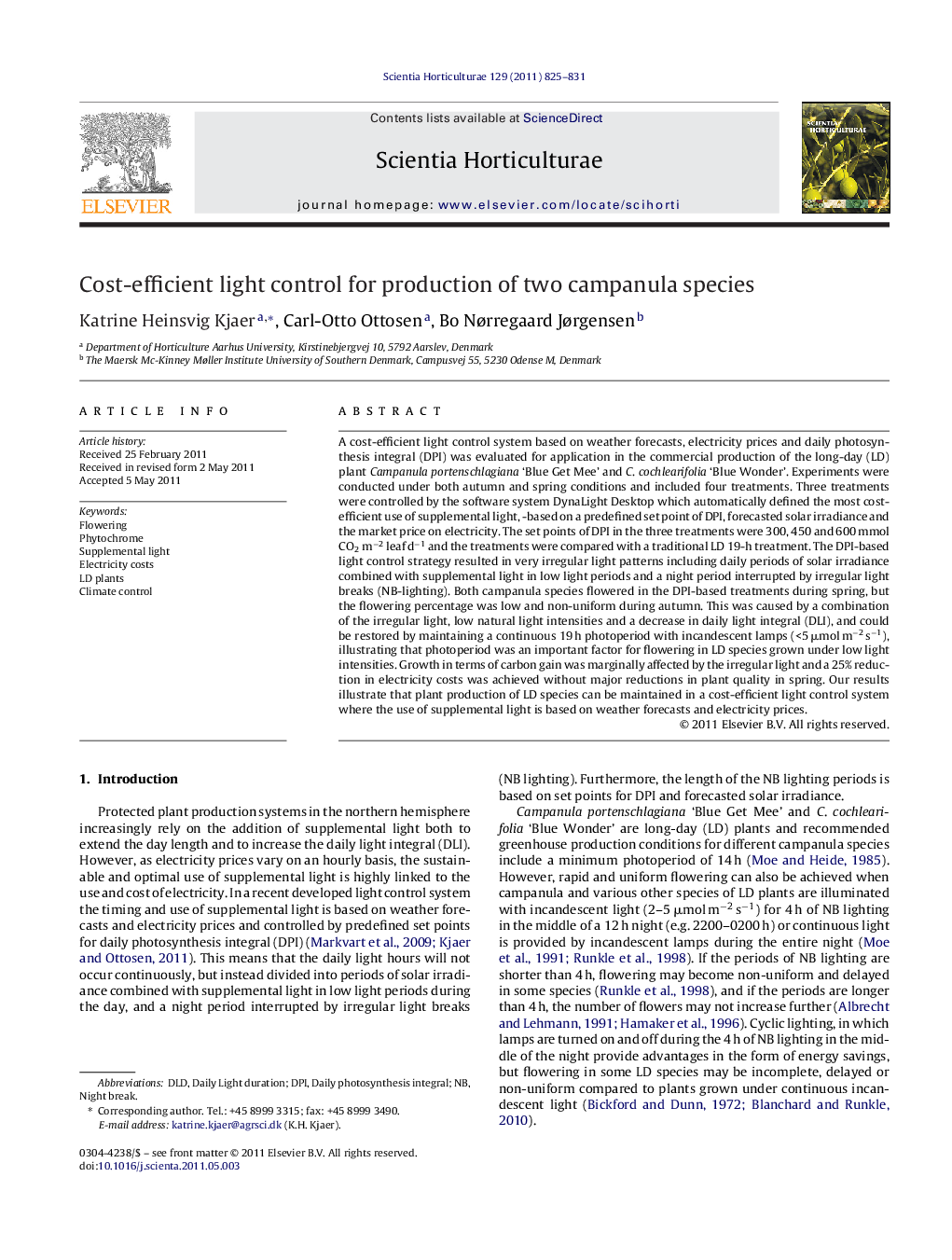| کد مقاله | کد نشریه | سال انتشار | مقاله انگلیسی | نسخه تمام متن |
|---|---|---|---|---|
| 4568030 | 1331286 | 2011 | 7 صفحه PDF | دانلود رایگان |

A cost-efficient light control system based on weather forecasts, electricity prices and daily photosynthesis integral (DPI) was evaluated for application in the commercial production of the long-day (LD) plant Campanula portenschlagiana ‘Blue Get Mee’ and C. cochlearifolia ‘Blue Wonder’. Experiments were conducted under both autumn and spring conditions and included four treatments. Three treatments were controlled by the software system DynaLight Desktop which automatically defined the most cost-efficient use of supplemental light, -based on a predefined set point of DPI, forecasted solar irradiance and the market price on electricity. The set points of DPI in the three treatments were 300, 450 and 600 mmol CO2 m−2 leaf d−1 and the treatments were compared with a traditional LD 19-h treatment. The DPI-based light control strategy resulted in very irregular light patterns including daily periods of solar irradiance combined with supplemental light in low light periods and a night period interrupted by irregular light breaks (NB-lighting). Both campanula species flowered in the DPI-based treatments during spring, but the flowering percentage was low and non-uniform during autumn. This was caused by a combination of the irregular light, low natural light intensities and a decrease in daily light integral (DLI), and could be restored by maintaining a continuous 19 h photoperiod with incandescent lamps (<5 μmol m−2 s−1), illustrating that photoperiod was an important factor for flowering in LD species grown under low light intensities. Growth in terms of carbon gain was marginally affected by the irregular light and a 25% reduction in electricity costs was achieved without major reductions in plant quality in spring. Our results illustrate that plant production of LD species can be maintained in a cost-efficient light control system where the use of supplemental light is based on weather forecasts and electricity prices.
► Production of campanula can be maintained in a cost-efficient light control system.
► Irregular light periods had marginal effects on growth and flowering in increasing light.
► Flower development was impaired by irregular light periods in decreasing light.
► Flowering was restored in low light by continuous lighting with incandescent lamps.
Journal: Scientia Horticulturae - Volume 129, Issue 4, 27 July 2011, Pages 825–831